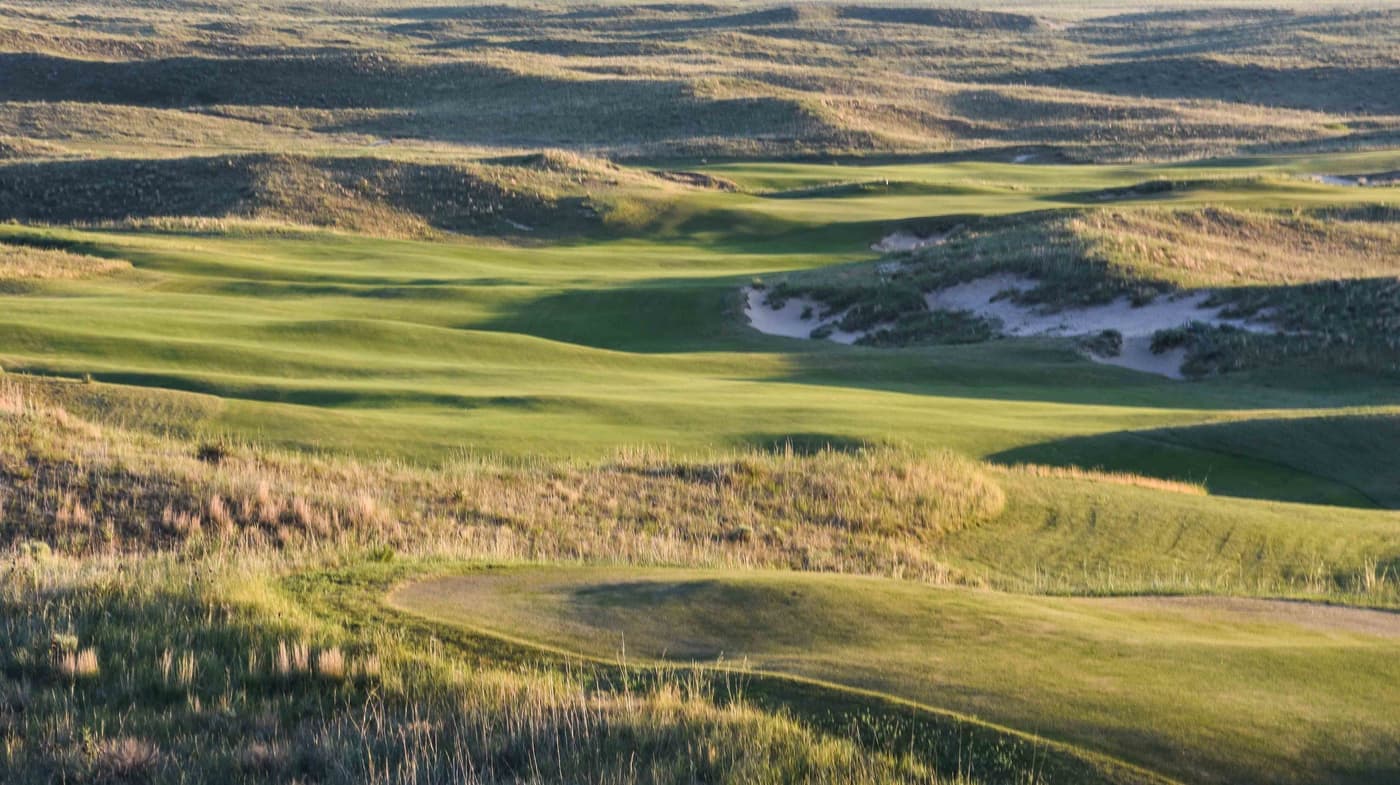- Courses
- North America
- USA
- Colorado

- Address1 Ballyneal Ln, Holyoke, CO 80734, USA
Ballyneal sounds Irish so it’s fitting that this is a links course albeit an inland links. The dream of Rupert and Jim O’Neal has become a reality and we think that this course, which is located in the middle of a huge Colorado dunescape, will eventually rival Sand Hills. Even the address – Holyoke – sounds like a current Open Championship links venue.
This is what the minimalist architect Tom Doak has to say about the exciting Ballyneal:
“There are more than a hundred links courses scattered around the coasts of Great Britain and Ireland, yet no two of them are very much alike. Indeed, on many great links, the holes at one end are of a much different character than the holes at the other end of the course. Such is the variety of Nature, the infinite combinations of wind and weather which give birth to sand dunes.
Ballyneal is set upon a thousand acres of such dunes, and our goal has been to take them as we found them and build a course which is a product of the land, rather than forced upon it.
Ballyneal is unique in one respect. I don't know another course where large natural undulations are such a big part of the greens and green complexes, and affect the strategy as much as they do at Ballyneal. This was not a concept we started with; it just evolved during construction.
Most of those "natural undulations" were, in fact, modified from their original form so that the ball would eventually come to rest in certain parts of the green. Some of them were that steep! But the natural contours dictated the form of nearly every green, and all of the finished contours tie in to the natural contours on the exterior, so that you can still use the natural contours to get your approach shot into position."
The following article was written by former golf professional Doug Sobieski and is an edited extract from Volume Five of Golf Architecture: A Worldwide Perspective. Reproduced with kind permission. To obtain a copy of the book, email Paul Daley at fswing@bigpond.net.au
Travelling through the high plains of eastern Colorado, rural roads connect dozens of small farming and ranching communities – many of which evolved as the result of railroad expansion a century ago. A few miles before reaching the Nebraska border, Holyoke, boasting a population of 2,400 and at an elevation of 3,736 feet, is not dissimilar to many of these towns.
However, as you continue south down miles of dirt roads, an exceptional landform known to locals as the ‘Chop Hills’ appears in the distance. Hidden within those contours exists Ballyneal, which makes Holyoke distinctly different.
Covering less than five square miles (approximately 3,000 acres), the Chop Hills bear no resemblance to the elegant undulations found throughout most of the Great Plains. Sharp changes in elevation render them unusable for crops or livestock, in complete contrast to the gently rolling land reaching for miles in every direction.
Jim Urbina, Senior Associate for Tom Doak’s Renaissance Golf Design, visited the Ballyneal site in November 2001 to evaluate the opportunity. In spite of being a lifelong Colorado resident, Urbina was unaware that dunes existed in his home state that rivalled those found at the greatest links around the world. The following spring Doak made his initial visit and recognized character in the land that would enable Ballyneal to be included in any discussion of great golf in the United States.
Isolating and cultivating the Ballyneal ‘look’ was a constant consideration from the outset. It was critical to make the edges of the course ‘believable’ by blurring the transitions from fairway to rough, to native landscape. The end result needed to make it appear that there was little in the way of human involvement in the creation.
Bruce Hepner, Doak’s lead associate for the project, mowed the entire course-corridor to a height of six inches in a single weekend. Given the steepness of the slopes and the high centre of gravity of the tractor, this proved to be a more dangerous task than expected. Hepner claims he was nearly killed half a dozen times before they even began shaping!
The team knew that they were part of something special, but they made a conscious effort to avoid such talk, hoping that the course could stand on its own merits. Ballyneal was basically built in just 21 weeks with nothing but a one-page construction plan, a ‘human grading plan’ without detailed blueprints, an irrigation crew of locals and an abundance of design talent.
This gifted group included the entire Renaissance roster as well as individuals normally associated with other design firms (Pete Dye’s and Coore & Crenshaw’s), and architect Kye Goalby too. The result is a collaborative effort that Doak likens to his first job working for Pete Dye at Long Cove on Hilton Head Island. According to Tom, “Ballyneal was just a dozen guys having a great time”.
Tom Doak - Back in the Ballyneal Sandbox
Course Reviews
Leave a Review
This course has not been reviewed.
If you have played this course, consider .
Thanks for the review
Your review has been successfully submitted and will be reviewed for approval.
Course Reviewed
You’ve already submitted a review for this course.
Course Architect
View All
Tom Doak studied Landscape Architecture at Cornell University where he won a scholarship to travel to the British Isles, he then spent seven months on the road, literally living on the links.



